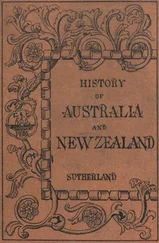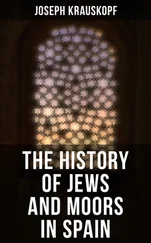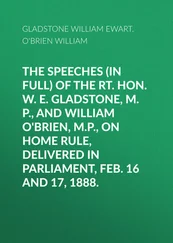William Finch-Crisp - Chronological Retrospect of the History of Yarmouth and Neighbourhood
Здесь есть возможность читать онлайн «William Finch-Crisp - Chronological Retrospect of the History of Yarmouth and Neighbourhood» — ознакомительный отрывок электронной книги совершенно бесплатно, а после прочтения отрывка купить полную версию. В некоторых случаях можно слушать аудио, скачать через торрент в формате fb2 и присутствует краткое содержание. Жанр: История, foreign_antique, foreign_prose, на английском языке. Описание произведения, (предисловие) а так же отзывы посетителей доступны на портале библиотеки ЛибКат.
- Название:Chronological Retrospect of the History of Yarmouth and Neighbourhood
- Автор:
- Жанр:
- Год:неизвестен
- ISBN:нет данных
- Рейтинг книги:5 / 5. Голосов: 1
-
Избранное:Добавить в избранное
- Отзывы:
-
Ваша оценка:
- 100
- 1
- 2
- 3
- 4
- 5
Chronological Retrospect of the History of Yarmouth and Neighbourhood: краткое содержание, описание и аннотация
Предлагаем к чтению аннотацию, описание, краткое содержание или предисловие (зависит от того, что написал сам автор книги «Chronological Retrospect of the History of Yarmouth and Neighbourhood»). Если вы не нашли необходимую информацию о книге — напишите в комментариях, мы постараемся отыскать её.
Chronological Retrospect of the History of Yarmouth and Neighbourhood — читать онлайн ознакомительный отрывок
Ниже представлен текст книги, разбитый по страницам. Система сохранения места последней прочитанной страницы, позволяет с удобством читать онлайн бесплатно книгу «Chronological Retrospect of the History of Yarmouth and Neighbourhood», без необходимости каждый раз заново искать на чём Вы остановились. Поставьте закладку, и сможете в любой момент перейти на страницу, на которой закончили чтение.
Интервал:
Закладка:
John Paston died in the Fleet Prison, after the seizure of his estates.
Fourteen persons hanged at one time upon a gallows erected on the beach.
The Duke of Norfolk, at the head of 3,000 men, laid siege to Caister Castle, which was surrendered to his Grace. He died in 1475, and Caister Castle again reverted to the Paston family.
Yarmouth threatened by the French fleet. 200 armed men sent from Norwich.
A whale came ashore south of Grubb’s Haven, which was cut to pieces and carried away in carts.
The Bailiffs feasted Sir John Paston, son of the late John Paston, on porpoise, then a royal fish.
May 16th. By charter of Henry VII., Burgesses were empowered to constitute Justices of the Peace.
The fourth Haven made; and the fifth Haven cut in the reign of Henry VIII., 1529.
House of Carmelites, or White Friars, destroyed by fire; founded in Edward I.’s time, 1278.
Southtown united with Gorleston.
Queen of France and her husband, Charles Brandon, Duke of Suffolk, entertained here three days.
Church of the Dominicans burnt down.
Great dearth of corn. The extravagant sale price then was 26s. 8d. per quarter. Several men were hanged for taking part in a riot arising from the same.
Gorleston began to be built upon. (See 1511.)
The first Yarmouth crane erected by Richard Bishop.
Duke of Suffolk suppressed a riot arising from the dearness of corn.
Nov. 1st. Tumult in St. Nicholas’ Church; twenty-four persons, with William Swarton, the chaplain, at their head, disturbed the congregation while the Rev. D. R. Cotton was preaching.
The high altar of St. Nicholas’ Church, remarkable for its richness and beauty, with the saints’ figures and pictures, broken and destroyed.
Oct. 28th. Four merchant heretics entered St. Nicholas’ Church, and created a great disturbance during the service.
Nov. 2nd. A merchant and shoemaker were fined 2s. each for bargaining and selling a last of white herring in the Church.
Sir Humphrey Wingfield returned to Parliament, held at Westminster.
Ordered that Aldermen should wear scarlet gowns, with fur tippets and straight hose, at assemblies and festivals.
Height of town wall, 23 feet. On war being declared the following year with France, a large rampire was thrown up on the eastern side, and afterwards extended along the north and south walls. (See 1396.)
Sir H. Wingfield again returned to Parliament.
At Corporate meetings no member allowed to depart without leave of the Bailiffs; otherwise was fined for disorderly conduct. Members of the Corporation compelled to wear scarlet gowns and straight hose, under penalty of fines.
Two French ships and 120 prisoners taken by the town.
A house for country butchers built.
The sixth Haven made. It was agreed that the money, plate, ornaments, robes, vestments, tunicles, albs, ameffes, belonging to St. Nicholas’ Church, should be disposed of, together with the bells in the steeple and other property in the Church, and the proceeds (£1,816 9s. 7d.) devoted to its construction. The Haven was then commenced, 100 men being employed daily upon it.
A rebellion in the town. Kett’s adherents advanced and destroyed all the materials for the Haven, and laid it in ruins; and the work of the Harbour was stopped till the following year. The next attempt also proved as unsuccessful. Another report says – The Norfolk rebellion, under Kett, the tanner, commenced; but their designs were frustrated by Yarmouth men, who, setting fire to a stack of hay on the west side of the Haven, were able to attack the enemy unseen, and defeated them, many insurgents being killed, 80 taken prisoners, and six pieces of ordnance secured. They were afterwards defeated by the Earl of Warwick at head-quarters in Norwich, and lost some 4,500 men; their leaders, William and Robert Kett, being suspended alive in chains on a gibbet.
Another great Plague. (See 1349.)
The Castle used as a Borough Gaol. During subsequent periods of alarm, it was again repaired. The upper part of it was taken down in 1620, and the following year the whole fabric was ordered to be dismantled and demolished.
Many of the brasses enclosing the inscriptions on the walls of St. Nicholas’ Church sent to London to be cast into weights and measures for the town’s use.
John Dudley, Duke of Northumberland, K.G., High Steward of the Borough.
A Grammar and Free School in existence in Yarmouth, the “Parson of Haddiscoe” being appointed for a quarter of a year on trial. He was succeeded the same year by an “expert man;” and it was agreed that each of the four-and-twenties (Aldermen) should pay towards his living 18d., and each of the eight-and-forties (Common Councilmen) 8d. a-year over the stipends, upon the well-doing of the schoolmaster. From 1551 till 1757, twenty-eight gentlemen were appointed to the Mastership. In 1757 the school appears to have been closed, for we find the master quitting possession and resigning his office; and on Feb. 5th, 1773, the chamberlains were directed to do necessary repairs, and to let the school to Mr. Richard Eaton, the younger, for £4 a-year. The school was re-established in 1863.
Sir W. Wodehouse, Knt., and N. Frymage, Esq., returned to Parliament. Every inhabitant found smoking tobacco or overcome with drink in any tippling-house was apprehended.
Oct. 1st. Robert Eyre and Simon More were chosen Burgesses of the Parliament.
Drawbridge erected to connect Southtown with Great Yarmouth, in place of the one built in 1427, but which was carried away in 1570 by the tide.
Beer sold at 3s. 4d. per thirty-two gallons.
This year and two following, six Aldermen were returned to Parliament.
Thomas Howard, Duke of Norfolk, High Steward of the Borough.
Fifty vessels wrecked off Yarmouth within 24 hours.
A fire beacon placed on the top of the Castle, as the Haven was very dangerous.
No brewer allowed to brew in the town unless by the appointment of the Bailiffs.
Another attempt to form a Haven, a ship being sunk at the mouth to stem the tide. But this project was abandoned the following year, and it was stopped up with furze bundles in 1557.
The Hermitage on the west side of the Haven given to the town.
Dec. 1st. The town inundated. Men rowed up and down the streets in boats, and several ships were drawn over the Denes with windlasses.
The ground on the south side of Town Hall was, in the time of Queen Elizabeth, called “The South Foreland,” or “Furlong’s End.” In 1568 the houses there standing were given by William Garton to the churchwardens for the use of the Church. In 1622 they were repaired, and in 1674 rebuilt. John Fastolf, the father of Sir John Fastolf, of Caister Castle, had a house in the “Foreland,” but whereabouts cannot now be discovered. These houses were re-fronted by the present owner in 1866.
Sir T. Wodehouse, Knt., and William Barker, Esq., returned to Parliament.
The Market Cross repaired.
Читать дальшеИнтервал:
Закладка:
Похожие книги на «Chronological Retrospect of the History of Yarmouth and Neighbourhood»
Представляем Вашему вниманию похожие книги на «Chronological Retrospect of the History of Yarmouth and Neighbourhood» списком для выбора. Мы отобрали схожую по названию и смыслу литературу в надежде предоставить читателям больше вариантов отыскать новые, интересные, ещё непрочитанные произведения.
Обсуждение, отзывы о книге «Chronological Retrospect of the History of Yarmouth and Neighbourhood» и просто собственные мнения читателей. Оставьте ваши комментарии, напишите, что Вы думаете о произведении, его смысле или главных героях. Укажите что конкретно понравилось, а что нет, и почему Вы так считаете.












